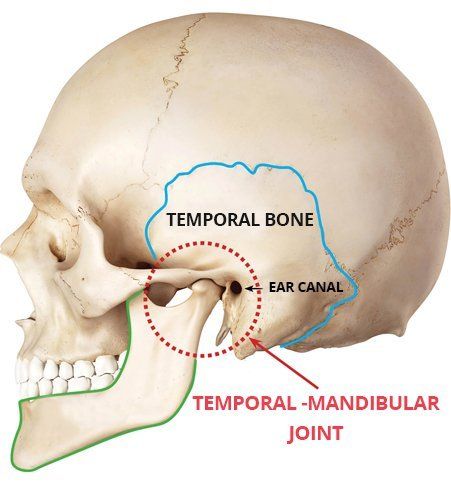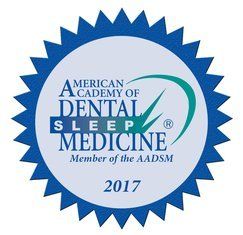TMJ Disorders (TMD)
Are you experiencing TMJ pain? Temporomandibular joint disorder (TMD) and TMJ syndrome are painful conditions that affect everything from your jaw to migraine headaches and muscle fatigue through your neck and back. Some people never realize there’s something wrong with their jaw until chronic pain is an everyday part of their life.
Dr. Phillips has worked with thousands of patients to help overcome their jaw pain and TMJ disorder. Her extensive training and knowledge of TMD allows us to provide holistic and effective therapies for patients of all ages and backgrounds.

What is TMJ?
So what’s the difference between “TMJ?” and “TMD”?
TMD Symptoms
Sleeping disorders are often related to other underlying health or anatomical issues, resulting in poor breathing or collapse of the airway when you sleep.
Certain types of sleeping disorders, such as obstructive sleep apnea (OSA) are due to anatomical obstruction of your airway while soft tissues at the back of your mouth collapse against the throat. This can be an inherited risk factor or due to something like weight gain. It may be a condition that’s developed over time, even if it wasn’t a problem during childhood.
Most people will tell you that the signs of sleep apnea and sleep disorders involve chronic snoring and when you have difficulty sleeping through the night. While you may not be aware of all the symptoms, your family and/or roommates likely will.
Other signs and symptoms of obstructive sleep apnea include:
- Depression or irritability
- Large neck circumference
- TMJ disorder/TMD or jaw pain
- Drowsiness and daytime fatigue
- Migraines, headaches
- Weight gain
- Cardiovascular disease
- Gasping for breath or an extended pause in breathing *
*ask your sleep partner
While managing underlying health concerns may improve your lifestyle, they will not treat the sleep apnea causes that are contributing to them. You should talk to a sleep physician or healthcare provider immediately if you suspect that a sleep disorder may be to blame for your condition; it could save your life!
Take the first step toward sleep apnea relief and schedule a sleep apnea screening with your physician today. If you have already been diagnosed with sleep apnea and need an alternative to CPAP, or if you need help figuring out where to start, please contact a sleep apnea specialist like Dr. Phillips.
TMJ Pain Treatment Options
Answering Your TMJ / TMD Related Questions
-
Does TMD cause my headaches?
It could be one possible contributing factor, but there are many causes for headaches. The contracture of the facial muscles can produce a headache cycle that is sometimes difficult to stop. TMD is one possible cause of headaches, or it might be the effect of other contributing factors, such as migraine. If you continually suffer headaches, chances are that you are also developing a clenching habit that can put undue stress on the temporomandibular joint. Being fitted with a bite splint can help to train your TMJ and jaw muscles to relax, reducing the strain placed on them throughout the day. If you have an incredibly stressful lifestyle, let our TMJ specialist know.
-
My jaw only clicks, but I have no pain. Can it get worse?
Clicking may or may not be a symptom of a future problem. If occasional, with no pain, it may not present a future issue. The key here is whether there is a progression of clicking, changes in the click intensity or frequency or if it has just started. However, if it clicks every time you chew or opens your mouth or changes in nature, it may be an early symptom of a more severe problem. You should consult your dentist before it progresses to a locked jaw. Most healthy joints do not make clicking noises each time they’re used. Watch for other sounds, such as popping or grinding.
-
What causes locked jaw?
In rare situations, internal joint damage to your TMJ can destroy the tissues that allow it to glide back and forth. This can lead to the disc slipping or even being worn down. As a result, some people experience very alarming situations where their mouth becomes locked in place — either opened or closed — and may need to manually reposition on their own, with the help of a TMJ specialist, or make a trip to the emergency room.
-
Does Dr. Phillips accept my insurance? Or is she a participating provider on my insurance plan?
Even though Dr. Phillips is not a participating provider on your medical insurance plan, we will assist you in filing your medical insurance claims and provide you with all the documentation required to process your claim. We will help you receive all the benefits of your particular insurance plan by providing letters and various other documentation of your specific situation directly to your carrier to help you minimize any out-of-pocket expenses.
Depending on the type of TMJ treatment you’re receiving, your therapies may be covered by either your medical or your dental coverage. As an out of network provider, we can file claims on your behalf to either. Plus, flexible payment options are available to fit your budget!
-
What kind of doctor is Dr. Phillips?
Dr. Phillips is a dentist who has obtained her Master of Science degree In Orofacial Pain. She is also a member of the American Academy of Orofacial Pain and is seeking her Board Certification. While orofacial pain is still a proposed specialty of the American Dental Association, this board exam will be the basis of all certifications requiring two years of residency. Therefore, she no longer practices general dentistry, as she has focused on diagnosing and treating facial pain, headaches, TMD & Sleep Disorders.
More Information About TMJ Disorders
- https://www.tmjtexas.com/tmj-ear-pain
- https://www.tmjtexas.com/sleeping-with-tmj
- https://www.tmjtexas.com/who-treats-tmj-disorders
- https://www.tmjtexas.com/why-is-jaw-popping-clicking
We're At Your Service
REstore TMJ & Sleep Therapy P.A.
1001 Medical Plaza Drive,
Suite 200 | The Woodlands, TX 77380
281-296-6797
Dr. Phillips serves TMJ & Sleep patients in: The Woodlands TX | Spring TX | Conroe TX Tomball TX | Cypress, TX | Houston, TX | Kingwood TX | Humble, TX | Katy TX
© 2023 by REstore TMJ & Sleep Therapy | Terms Of Service & Privacy Policy | XML Sitemap
-2700x842-1920w.png)






